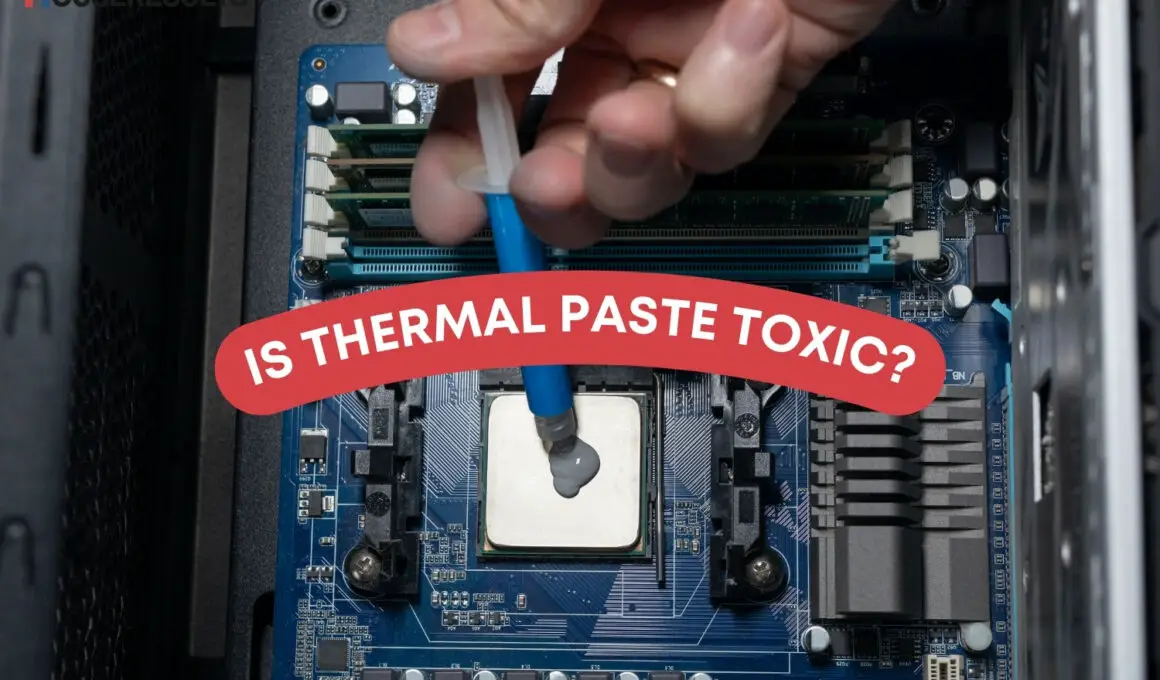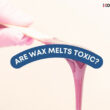Table of Contents Show
Quick Facts 🥳
- Thermal paste is not toxic and is safe to use. However, precautions should be taken when using it.
- The ingredients present in the thermal paste are typically divided into three categories.
- There are four main types of thermal paste: silicone-based, metal-based, ceramic-based, and conductive.
- Visit the homeresults.com homepage for more guides like this.
Are you curious about the safety of thermal paste? As PC enthusiasts, we’re constantly tinkering with our systems to optimize performance.
But have you ever stopped to wonder what exactly is in that tiny tube of thermal paste and whether it poses any health hazards? In this article, we’ll explore the toxicity of thermal paste and debunk some common myths surrounding its use.
NEW: Are Bay Leaves Toxic to Pets? (Cats, Dogs, Others)
Thermal Paste Explained
Thermal paste is a heat-conductive compound that fills the gaps between a computer processor and its heat sink. Thermal paste aims to improve the contact between these two surfaces so that heat can more easily transfer from the processor to the heat sink.
Thermal paste is usually made from metals, ceramics, and organic compounds. It is important to note that thermal paste is not electrically conductive, so it will not cause any short circuits if it comes into contact with your computer components.
Thermal paste can degrade over time, so checking your computer’s cooling system regularly is essential to ensure it is still doing its job. If your computer is running hotter than usual, it may be time to replace the thermal paste.
What are the ingredients present in thermal paste?
The ingredients present in the thermal paste are typically divided into three categories:
- Fillers
- Oils
- And additives.
The most common filler is zinc oxide, which makes up most of the volume in most pastes. Other fillers include aluminum oxide, boron nitride, and silicon dioxide.
The oils used vary depending on the desired consistency of the paste, but they are generally either synthetic or silicone-based. Additives can include anti-corrosion agents, wetting agents, surfactants, and dyes.
The Different Types of Thermal Paste
There are four main types of thermal paste: silicone-based, metal-based, ceramic-based, and conductive. Each type has its benefits and drawbacks.
- Silicone-based thermal paste is the most popular type. It’s easy to apply and remove and doesn’t damage sensitive components. However, it doesn’t conduct heat as well as other types of thermal paste.
- Metal-based thermal paste is more effective at conducting heat than silicone-based thermal paste. However, it’s challenging to apply and remove, and it can damage sensitive components.
- Ceramic-based thermal paste is somewhere between silicone-based and metal-based thermal paste regarding heat conductivity. It’s also fairly easy to apply and remove.
- Conductive thermal paste is the most effective at conducting heat but is also the most difficult to apply and remove. It can also damage sensitive components if not used correctly.
Pros and Cons of Thermal Paste
The followings are the pros and cons of thermal paste; you should consider
Pros:
- Thermal paste can help improve heat transfer between your CPU and heatsink, leading to better cooling performance.
- It can also help fill any small gaps or irregularities on the surface of your CPU, which can further improve cooling.
- Thermal paste is relatively inexpensive and easy to apply.
Cons:
- If not applied correctly, a thermal paste can impede heat transfer instead of helping it. Be sure to follow instructions carefully when applying thermal paste.
- Some people are concerned about the possibility of toxic chemicals in thermal paste leaching into the bloodstream through the skin. However, there is no evidence that this concerns modern thermal pastes.
Is Thermal Paste Toxic?
Thermal paste is not toxic and is safe to use. However, if you’re regularly working with computers or other electronic devices that use thermal paste, it’s important to take precautions to protect yourself.
Wear a mask or respirator when working with thermal paste, and make sure to ventilate the area well if you’re concerned about the toxicity of thermal paste, there are now many “green” options on the market made from safe, non-toxic materials.
However, there are some things to keep in mind when using it;
- First, thermal paste comprises various materials, including metals, ceramics, and polymers. These materials are safe to touch and handle but can be dangerous if ingested or inhaled. So, keeping thermal paste away from your mouth and nose is essential.
- Thermal paste can irritate the skin, eyes, and lungs. So, wearing gloves and eye protection is essential when handling it. And, if you get any on your skin, be sure to wash it off immediately.
- Thermal paste can degrade over time. So, it’s essential to check the expiration date on the tube before using it. And, if you’re storing unused thermal paste, be sure to keep it in a cool, dark place.
- Finally, while thermal paste is not toxic, some of the chemicals used in its manufacture may be hazardous. So always follow the directions on the label carefully and dispose of unused thermal paste properly.
How To Accurately Use Thermal Paste
Thermal paste is a crucial component in ensuring that your CPU stays cool. Applying thermal paste correctly is important to avoid damaging your CPU and achieve the best possible cooling performance. Here’s a step-by-step guide on how to apply thermal paste:
- Clean the CPU surface: Use isopropyl alcohol and a lint-free cloth to clean the top of the CPU. This will remove any existing thermal paste and provide a smooth surface for the new thermal paste.
- Apply a small amount of thermal paste: Squeeze a pea-sized amount onto the CPU’s center.
- Spread the thermal paste: Use a spreader (or your finger) to evenly spread the thermal paste across the surface of the CPU. Make sure there are no air bubbles in the paste.
- Attach the heat sink: Carefully attach the heat sink to the CPU, carefully not to dislodge any paste. Once it’s in place, you can screw it down or clip it into place, depending on your particular setup.
What Happens When You Eat Or Swallow Thermal Paste?
When you eat or swallow the thermal paste, it can cause gastrointestinal distress. Symptoms may include nausea, vomiting, and diarrhea. In severe cases, it can also lead to gastrointestinal bleeding. If you have swallowed thermal paste, it is important to seek medical attention immediately.
What Are The Effects Of Touching Thermal Paste?
Touching thermal paste can be harmful. The chemicals in the paste can be absorbed through your skin and into your bloodstream.
These chemicals can be toxic in large quantities and cause serious health problems. Short-term exposure to the chemicals in the thermal paste can cause skin irritation, headaches, dizziness, and nausea.
Long-term exposure can lead to more serious health problems like liver damage, kidney damage, and cancer.
So if you do come into contact with thermal paste, it’s advised that you wash your hands immediately and avoid touching your face or eyes. If you think you may have been exposed to high levels of the chemicals in thermal paste, it’s essential to seek medical attention immediately.
Alternatives To Thermal Paste
If you’re looking for an alternative to thermal paste, a few options are available.
- One is to use a thermal pad, which is a thin piece of material that conducts heat.
- Another option is to use a liquid metal compound, which can be applied directly to the CPU or other heat-generating component.
Final Thoughts
To summarize, thermal paste is not toxic in its solid form but can be dangerous if inhaled or ingested. Therefore, it’s important to use caution when applying and cleaning up thermal paste to avoid any potential health risks.
With the right steps and precautions taken, however, you should have no problems safely using thermal paste for your PC cooling needs.













